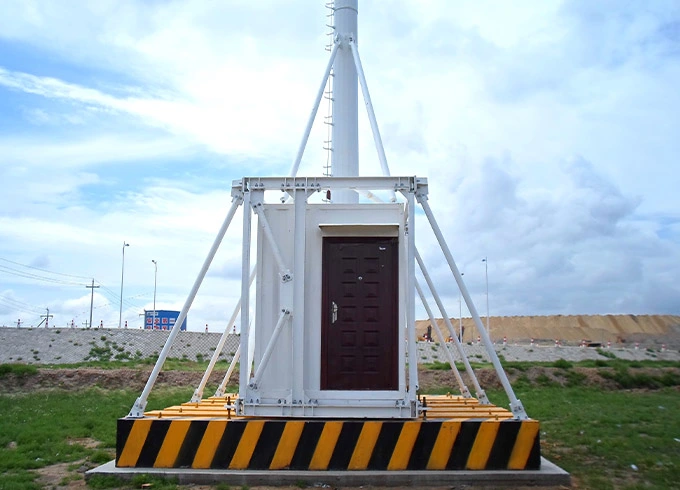345 kV transmission line towers form the critical infrastructure for modern bulk power transmission, enabling efficient long-distance electricity delivery with high voltage (HV) efficiency. Engineered for maximum load capacity and grid reliability, these structures are typically constructed from high-strength steel or hybrid (steel-concrete) monopole designs, built to endure extreme environmental stresses—including hurricane-force winds and severe ice loads (up to 30mm radial ice). Our 345 kV towers meet global standards and feature advanced galvanization/polymer coatings, ensuring 15+ years of structural integrity with minimal maintenance.
| Voltage | 345KV |
| Tower Type | Suspension Tower, Tension Tower, Dead Tower, Substation Structure |
| Height | 10M-100M |
| Circuit | Single / Double Circuit |
| Material | 1.High strength low alloy structural steel: Q420B which is equivalent with ASTM Gr60 2.High strength low alloy structural steels: Q355B which is equivalent with ASTM Gr50 or S355JR 3.Carbon Structural Steel: Q235B which is equivalent with ASTM A36 or S235JR |
| Welding | AWS D1.1 |
| Surface treatment | Hot dip galvanizing /painting/Powder coating |
| Hot dip galvanization | GB/T 13912-2002, EN ISO 1461,ASTM/A123 or equivalent |
| Welding Standard | AWS D1.1, AS554, AS 4100 standard or equivalent |
| Earthquakeproof Grade | Grade 8 |
| Ice wrapping | 5-10 mm |
| Verticality | 1 / 1000 |
| Working Temperature | - 45°C -+ 45°C |
| Nuts& Bolts | Mainly ISO 898 grade 6.8 and 8.8 bolts for Both Chinese, ISO and DIN standard |
| Working lifespan | 30/50 years |
345 kV transmission line towers are a critical infrastructure component for modern power grids, offering superior efficiency and reliability compared to lower-voltage alternatives. Here are the key advantages of choosing these high-voltage towers:
1. High Power Transmission Efficiency
345 kV towers are designed for low energy loss over long distances, making them ideal for bulk electricity transfer. Their optimized voltage level reduces resistive losses, improving overall grid performance.
2. Cost-Effective Infrastructure
By transmitting larger amounts of power in a single circuit, 345 kV towers reduce the need for multiple lines, lowering installation, land use, and maintenance costs compared to 230 kV systems.
3. Enhanced Grid Stability & Load Capacity
These towers provide higher load-bearing capacity, ensuring stable power delivery even during peak demand. Their robust design supports fluctuations in supply, especially when integrating renewable energy sources like wind and solar.
4. Future-Proof for Energy Demands
As electricity consumption grows, 345 kV infrastructure scales efficiently, avoiding the need for frequent upgrades. This makes it a sustainable investment for utilities and industrial power projects.
5. Adaptability to Diverse Terrains & Climates
Custom-engineered for harsh environments, 345 kV transmission towers feature corrosion-resistant coatings, anti-wind designs, and earthquake-resistant structures, ensuring durability in coastal, mountainous, or extreme-weather regions.
6. Compliance with Global Safety Standards
Manufactured under IEC, IEEE, and ANSI guidelines, these towers meet stringent safety and reliability requirements, minimizing risks in high-voltage power transmission.

